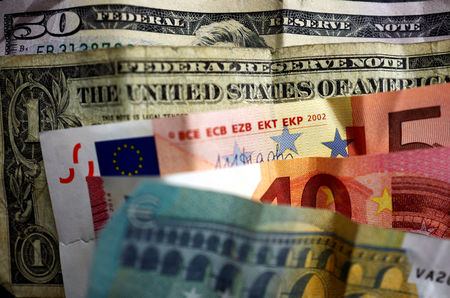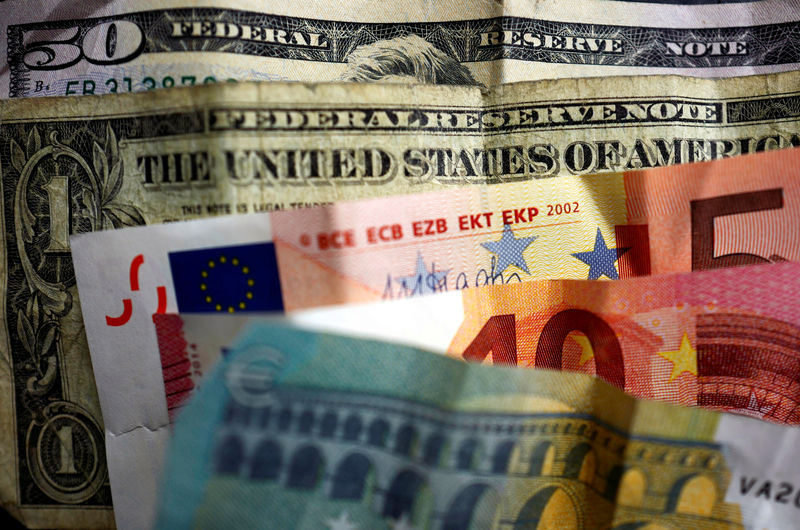Forex
Dollar just higher ahead of Fed minutes; euro awaits confidence data


© Reuters.
Investing.com – The U.S. dollar traded marginally higher in early European trade Wednesday, as traders awaited the release of the minutes from the latest Federal Reserve meeting for further clues of the path of U.S. interest rates.
At 04:05 ET (09:05 GMT), the Dollar Index, which tracks the greenback against a basket of six other currencies, traded 0.1% higher at 104.102.
Fed minutes could determine dollar direction
The dollar has slipped back slightly of late after waning expectations of early interest rate cuts by the Fed had seen the greenback climb to three-month highs.
The currency’s upcoming direction could well be decided by what the from the January Federal Reserve meeting, due for release later Wednesday, indicate in terms of the outlook for U.S. rates.
“Recall this was seen as a pretty neutral meeting until Fed Chair Jerome Powell used an opportunity in the press conference to say that a March rate cut was unlikely,” said analysts at ING, in a note.
Traders are currently pricing in around 90 basis points worth of easing by the Fed this year, probably starting in June.
Beyond the minutes, a slew of Fed officials are also set to speak this week, including and later on Wednesday.
Eurozone consumer confidence data due
In Europe, edged higher to 1.0807, ahead of the release of the latest figure for the eurozone.
This is expected to show a small improvement in February from the previous month, although it will likely remain very weak.
“If there is a ray of light for the eurozone economy it may be that wage growth is not falling as quickly as inflation and that there may be a boost from rising real incomes after all,” said ING.
traded marginally lower at 1.2616, after data showed that Britain recorded its highest ever in January as Chancellor Jeremy Hunt prepares his annual budget.
The U.K. recorded a budget surplus of £16.7 billion in January, due to record seasonal tax inflows, although the broader fiscal picture remains tough.
Chinese economic recovery on way?
In Asia, edged lower to 7.1891, with data showing increased consumer spending and travel demand during the Lunar New Year holiday, lifting hopes for a bigger recovery in consumption – which is a key driver of the Chinese economy.
The People’s Bank of China also cut its five-year by a bigger-than-expected margin on Tuesday, pointing to more support for the Chinese economy.
rose 0.1% to 150.14, with the pair remaining above the widely-watched 150 level after data showed a bigger-than-expected increase in Japanese in January, while contracted more than expected.
Breaks above 150 have attracted government intervention in the past, with officials also offering verbal warnings on any such moves last week.

 Forex3 years ago
Forex3 years agoForex Today: the dollar is gaining strength amid gloomy sentiment at the start of the Fed’s week

 Forex3 years ago
Forex3 years agoUnbiased review of Pocket Option broker

 Forex3 years ago
Forex3 years agoDollar to pound sterling exchange rate today: Pound plummeted to its lowest since 1985

 Forex3 years ago
Forex3 years agoHow is the Australian dollar doing today?

 Cryptocurrency3 years ago
Cryptocurrency3 years agoWhat happened in the crypto market – current events today

 World3 years ago
World3 years agoWhy are modern video games an art form?

 Commodities3 years ago
Commodities3 years agoCopper continues to fall in price on expectations of lower demand in China

 Economy3 years ago
Economy3 years agoCrude oil tankers double in price due to EU anti-Russian sanctions































